Wildlife expert Jodi Hilty discusses how the Yellowstone to Yukon Conservation Initiative’s interconnected corridors are making a massive impact on multiple species.
The Yellowstone to Yukon Conservation Initiative (Y2Y) is all about connections. It’s about connecting land through wildlife corridors so that animals can safely traverse huge areas for the purposes of roaming, feeding and reproducing. But it’s also about connecting with more than 700 different groups including industry, First Nations, government, volunteer community groups, land trusts and other conservation NGOs to protect and create nature-positive communities.
Y2Y’s work aims to help all wildlife, but the grizzly on their logo is there for a reason, says Jodi Hilty, the organization’s president and chief scientist. “One of the things we’ve found is that if we target what grizzly bears need, and we achieve that in a protect-and-connect perspective, we can get it right for most of the other critters on the landscape.”
We spoke with Hilty about her passion for wildlife and Y2Y’s rewilding work.
What got you interested in working with wildlife corridors?
I grew up in Colorado, outside of Boulder in the mountains. I spent a lot of my time trying to find mountain lions [cougars, as we tend to call them in Canada –ed.]. I continued on that journey through my schooling, and with my PhD, I happened to sort of fall into studying wildlife corridors.

Around the time that I was going to do my dissertation, papers were starting to come out saying we’re losing species from national parks. And one of the factors, particularly for smaller parks, is they are increasingly ringed by human activity and development, and animals can’t leave these parks and access resources. It was the beginning of shifting us away from just small protected areas and looking at large landscape conservation. It was around that time that the Yellowstone to Yukon vision came to be articulated, in 1993.
There was a buzz in the air, and after I graduated, we published one of the first corridor ecology books and that work has continued today. In fact, Canada is hosting its first corridors conference in April [2025]. So, we’ve come a long way.
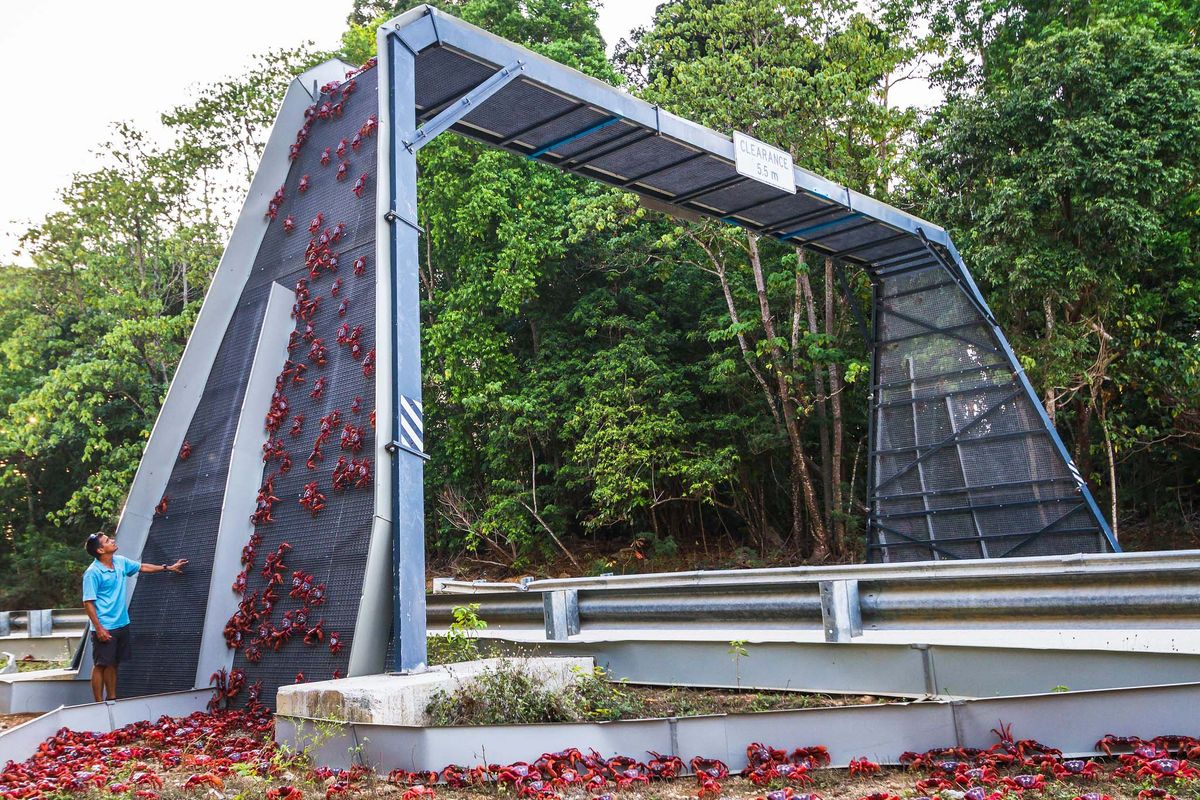
What really drove that increased knowledge as far as scientists realizing that wildlife required huge connected pieces of land to thrive?
It was in the early 1990s, when we were able to put out satellite collars and then GPS collars. That revolutionized what we knew.
One of the origin stories of Y2Y involves a wolf who started travelling just south of Banff National Park with a satellite collar. She started marching down Alberta and pretty quickly after she was collared, they lost contact with her. The scientists here in Banff had to call down to Texas and say, hey, can you train some more satellites on her?
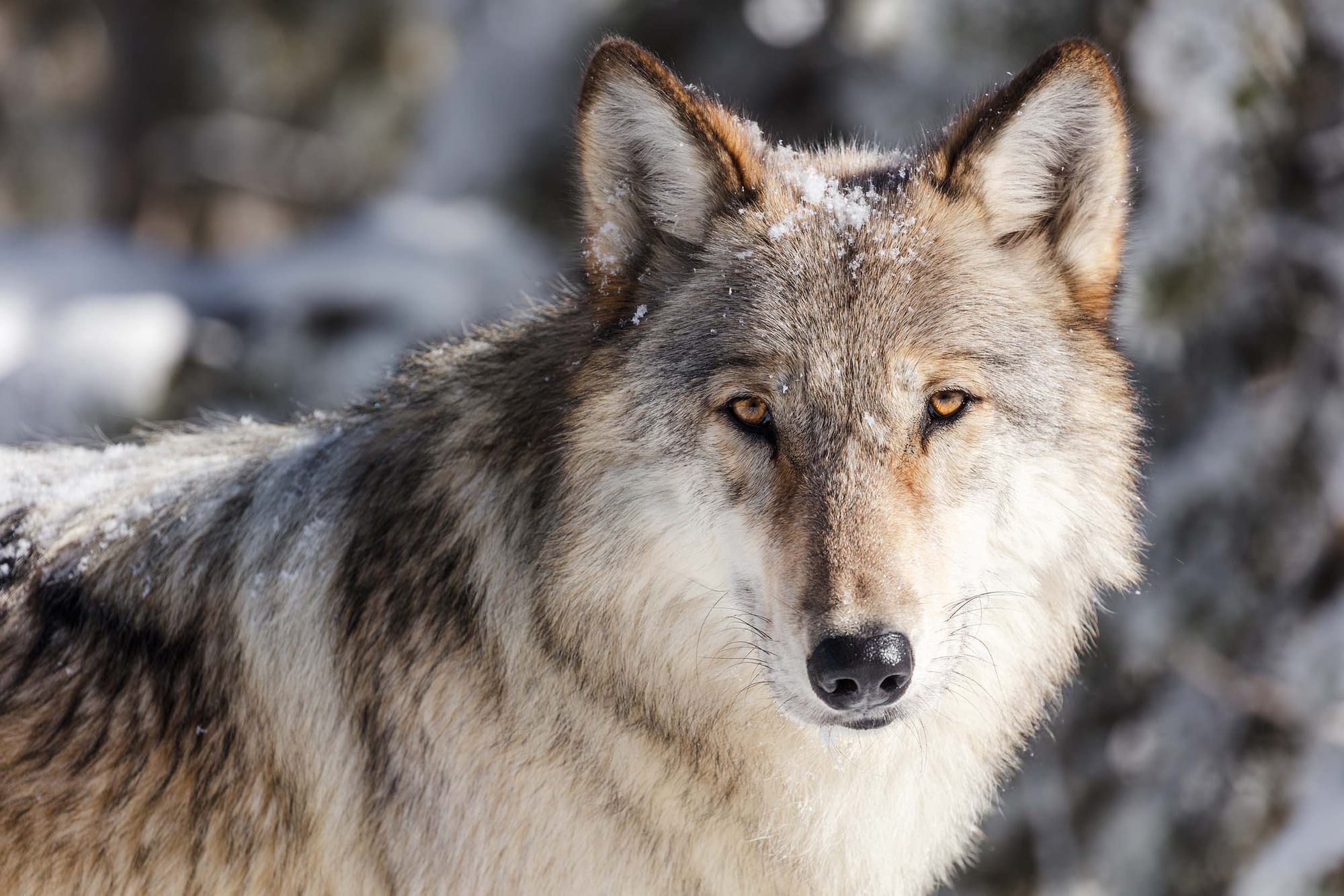
They watched her do a 100,000-square-kilometre journey over two years – she went across Montana, Idaho and Washington, Alberta and British Columbia. And it just blew the minds off of everyone. She is one of the reasons why the conservationists and scientists from each side started talking to each other and saying, wow, how are we going to conserve animals like her that really make these enormous movements?
There are now at least 173 underpasses and overpasses that are dedicated for wildlife to get safely across roads. There’s three more that are under construction right now and there are 47 that have been committed to by various governments. So, we’re getting to this place where consideration of wildlife getting across roads is just a normal part of what we do. That’s super exciting.
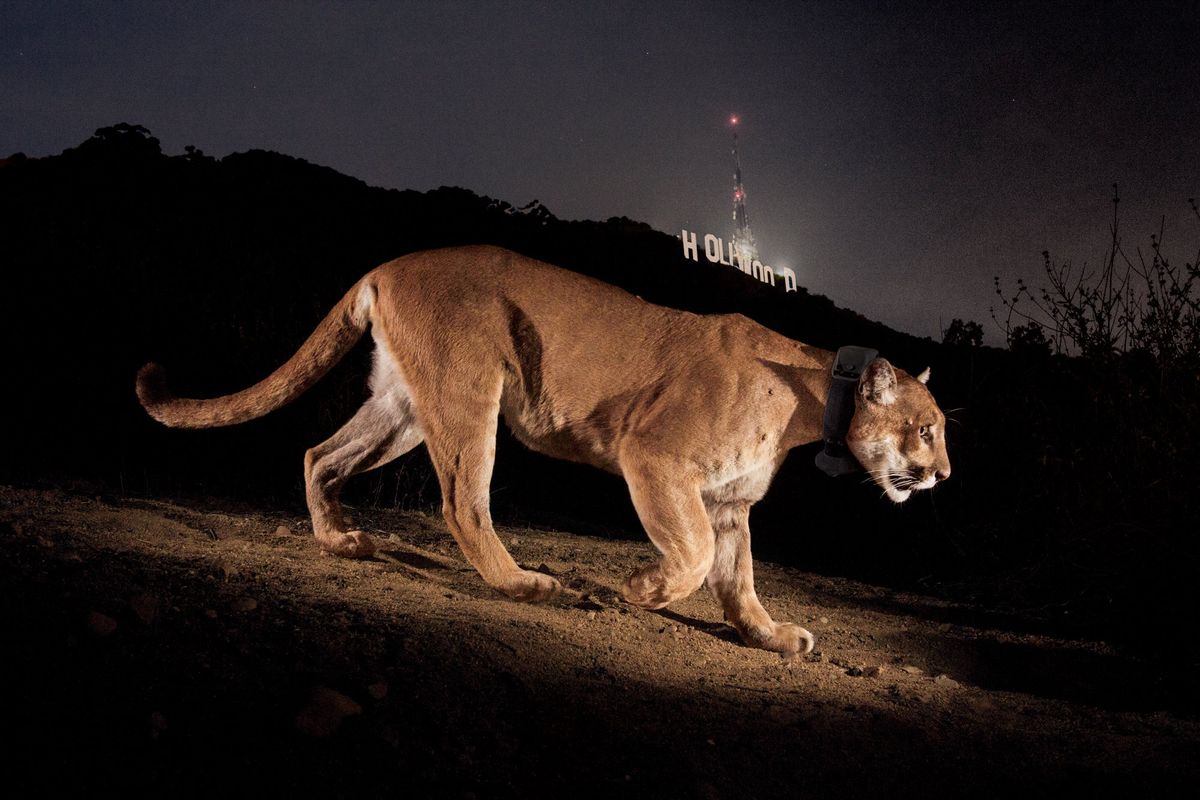
Grizzlies are on your logo, and they’re a keystone species so if they’re doing well, other species likely will as well. Does Y2Y use grizzly bears to see where corridors are needed?
Yes, their needs overlap with the needs of so many other animals. By focusing on grizzly bears, we can get it right for any other animal.
And so, particularly where we’re looking at things like the size of parks. When some national parks are expanded there are studies to look at: what do grizzly bears need, what do caribou need, and what do Dall [wild] sheep need? How can we make it a big enough park that it would actually maintain the ecological integrity of those animals over the long term, which is a requirement for Parks Canada?
It can be used that way; it can also be used to determine where grizzlies can best move in the landscape to face the least resistance from humans and still access resources and mates that they need. We can work with scientists to model and study that, and then work in a targeted way to secure those passageways.
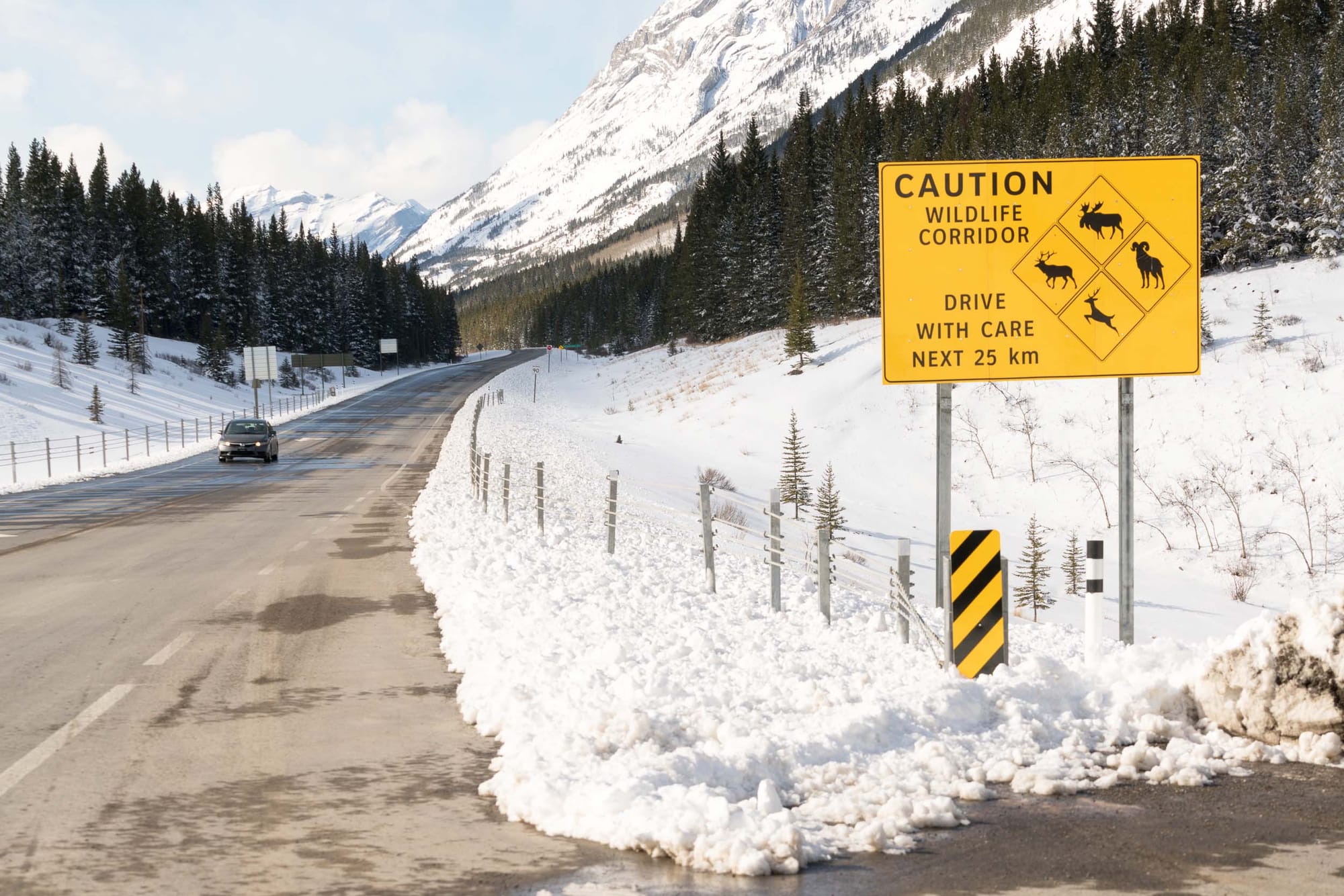
How much of a measurable impact has Y2Y made since they’ve started using wildlife corridors?
Collisions with cars from hooved animals like deer, elk and moose have been reduced by 96 percent. The impact of the structures and the fencing that directs wildlife to those structures is big.
We worked both on the British Columbia side and also on the U.S. side in this place called the Cabinet-Purcells – it’s a trans-border mountain region – restoring four different corridors. And because the researchers are on the ground, we’ve actually seen grizzly bears using some of those corridors, or seen footprints of grizzly bears in the mud using those restored corridors. And that’s super exciting.
There’s one place down in the U.S. in the Cabinet-Yaak area where there were somewhere around 10 individuals [grizzlies] and now we’re somewhere around 60. We know we’re having some success because we’re seeing those individuals start to disperse, which means the landscape is starting to get crowded for them.
Another piece of those wildlife crossing structures which I think is so cool is there are both underpasses and overpasses. It’s beneficial to have different structures because some animals prefer underpasses and others only use overpasses. Elk only use overpasses and open-span bridges – they don’t love the enclosed areas. But even within the species, different sexes use them differently. A male grizzly bear is more likely to use an underpass whereas a female with cubs, there’s no way she’ll risk her cubs getting ambushed, so she’ll only use an overpass. It’s really cool to see that work and see those tangibles.

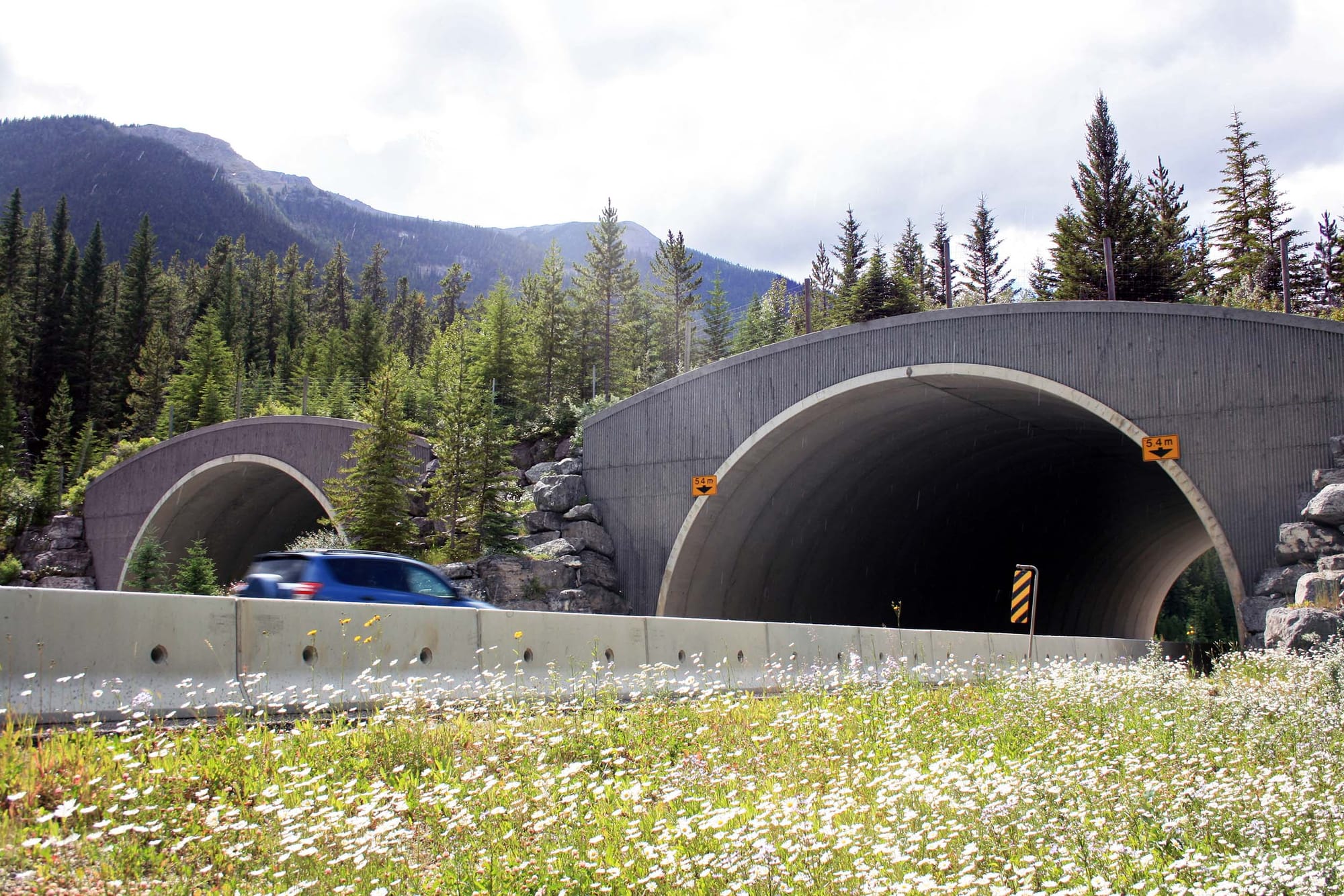
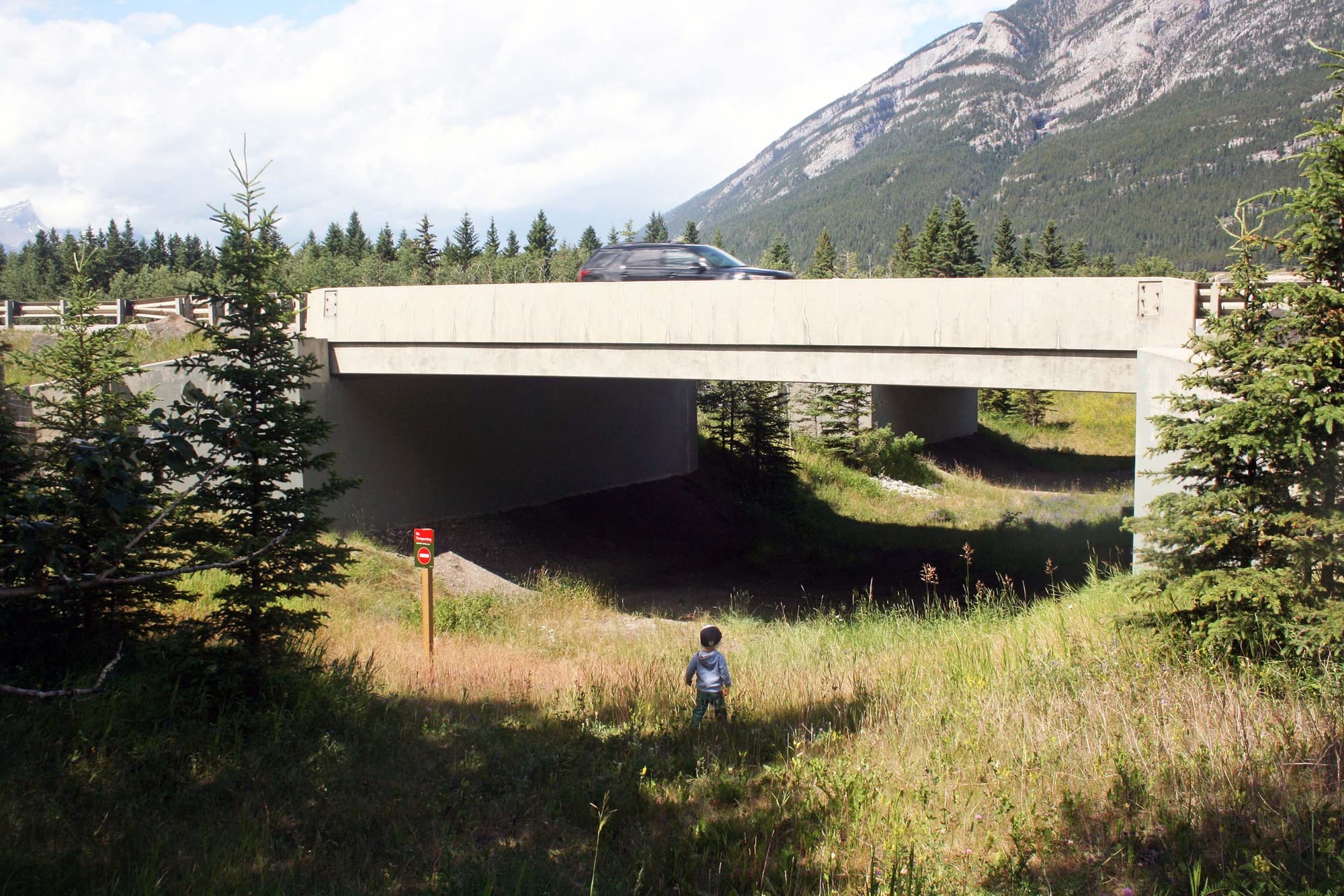
From top: 1. Aerial view of construction of the Bow Valley Gap wildlife overpass in 2023 just east of Banff National Park. Photo courtesy AIL. 2. The double-barrel design for a typical wildlife overpass in Banff National Park. Photo: Adam Linnard. 3. A wildlife underpass east of Banff National Park near Dead Man’s Flats, Alta. Photo: Adam Linnard.
Are there any species that would particularly benefit from wildlife corridors?
One of the animals that says it all to me are wolverines. Wolverines are at incredibly low density. On the Canadian side, we worked with the University of Calgary on a multiple-year study of wolverines. What was astonishing was to realize that even in our national parks like Banff and Jasper, we’re seeing a decline in wolverines, which is associated with human activities in terms of trapping outside the parks because the animals have such big ranges. But there’s also displacement happening from recreation that causes wolverines to be displaced or change their behaviour. They may change what times of the day they’re visiting certain places that might have human activity.
South of the border, they recently listed wolverines as an endangered species. In the U.S. they said wolverines will go extinct in the lower 48 states unless they’re connected to Canada. There are only about 300, which basically means we’ve got to keep the Y2Y region connected right there along the border.
The second thing they said is the real risk and challenge for wolverines is increasingly busy roads because they have a difficult time crossing those roads. When I was overseeing research down in Yellowstone, we had a couple of wolverines that went down to get carrion from the road and became carrion themselves – ended up being road kill. What we do collectively as a society in that trans-boundary region in the U.S. and Canada will determine whether or not they maintain this incredibly elusive species that really is so quintessentially wilderness.

What motivates you?
I moved north after I grew up in Colorado and raised my kids half in Montana, half in Alberta. And I really, really love the mountains. For me, it’s so important that my grandchildren – should I have any – and their children have the opportunity to have this place. But also that the animals and their children and grandchildren have a place where they can continue to move freely throughout the landscape. It’s so, so important.
This interview has been condensed and edited for clarity.
Main image: A grizzly bear. Photo: Adams/National Park Service.


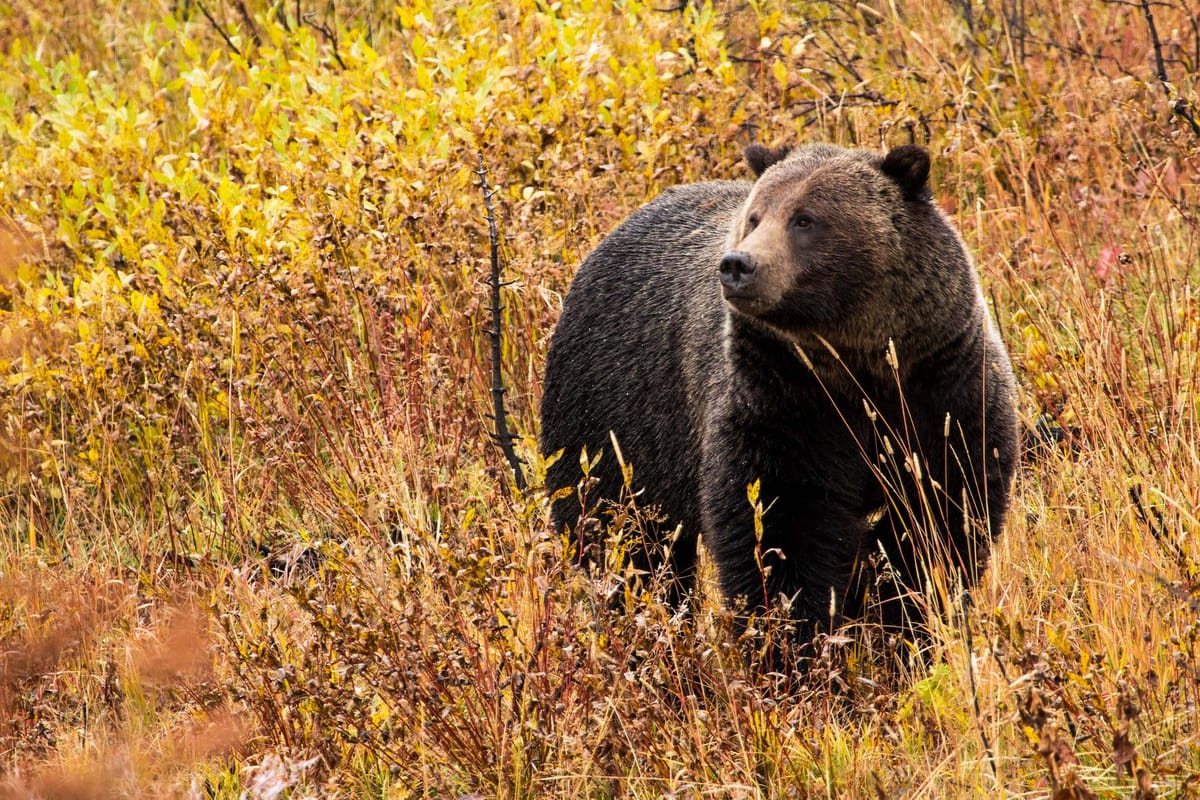




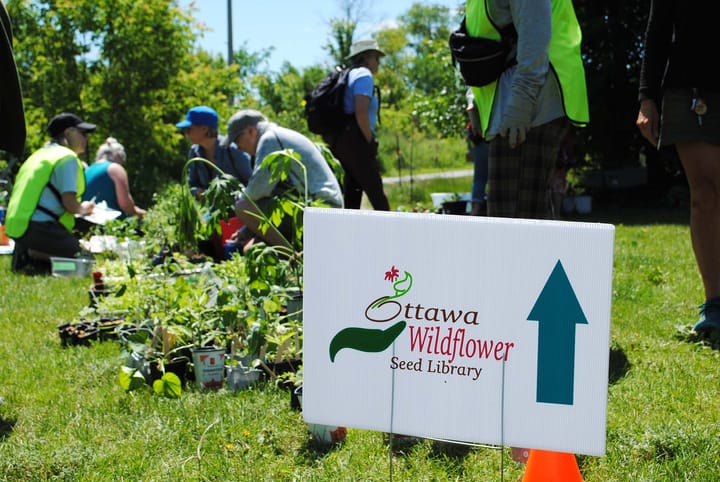
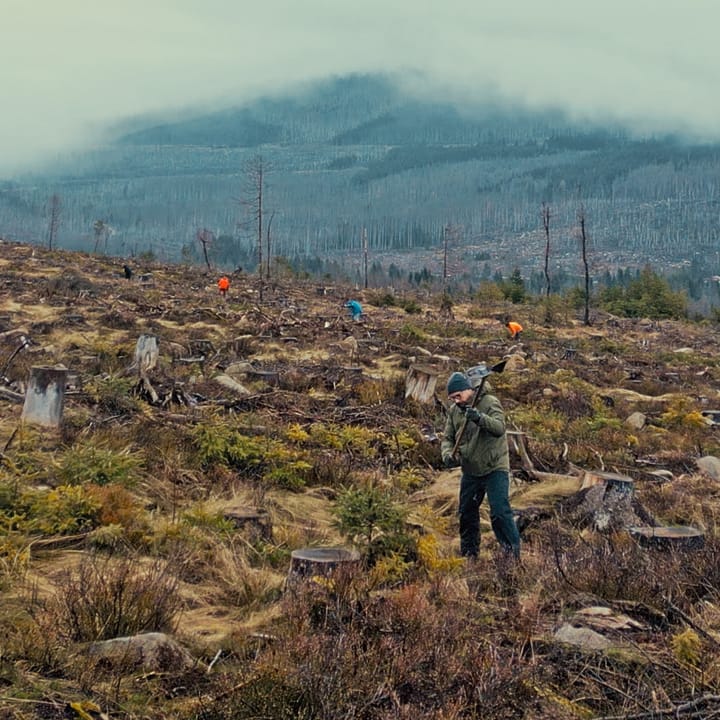
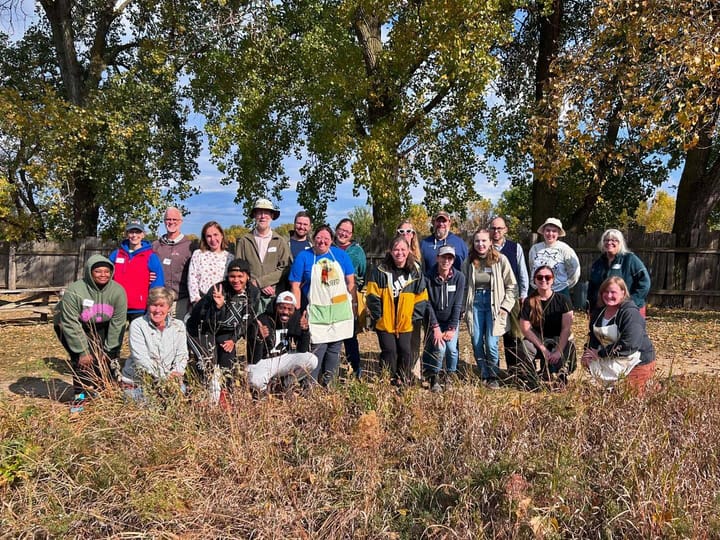
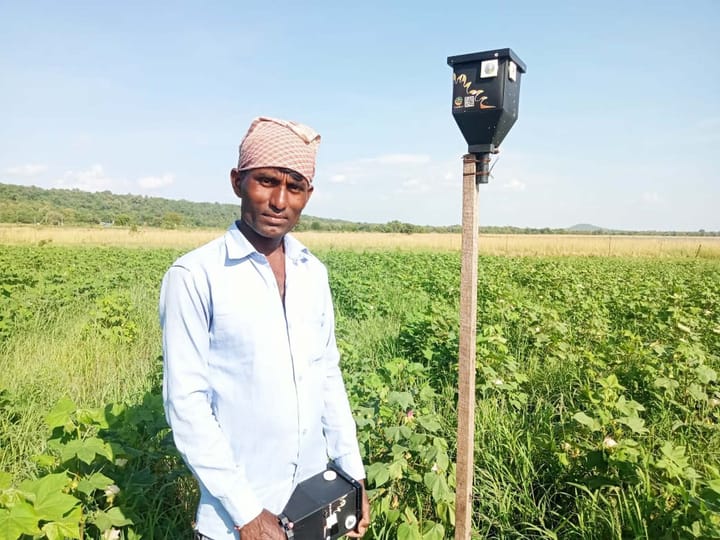
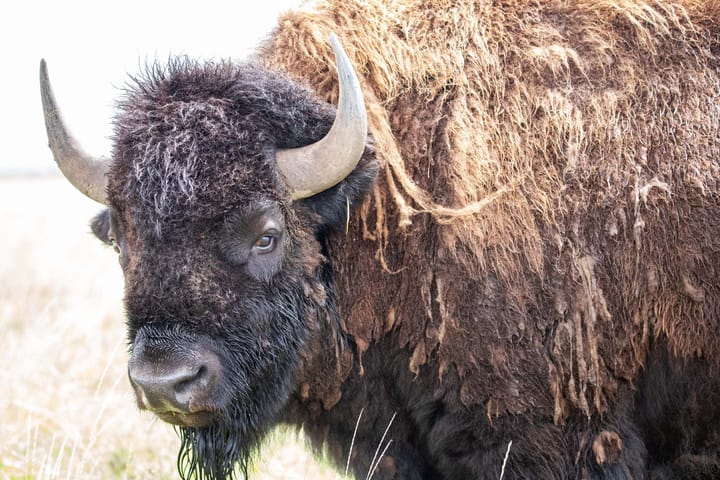

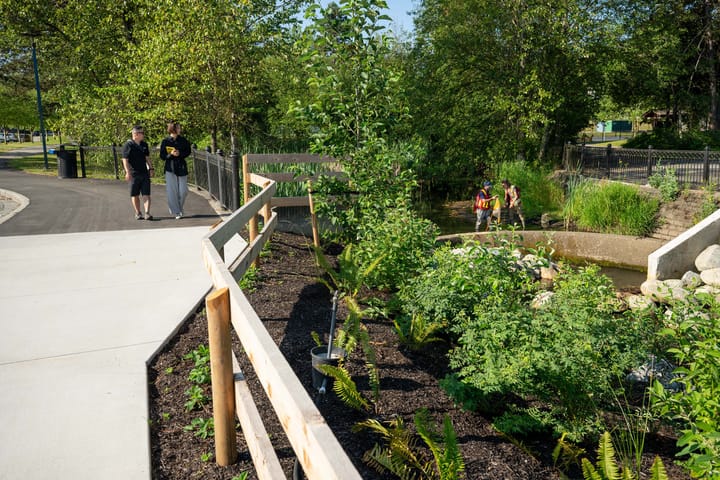
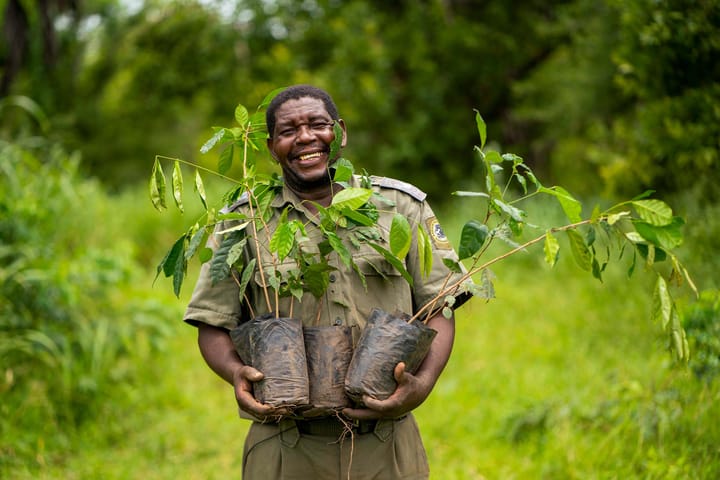
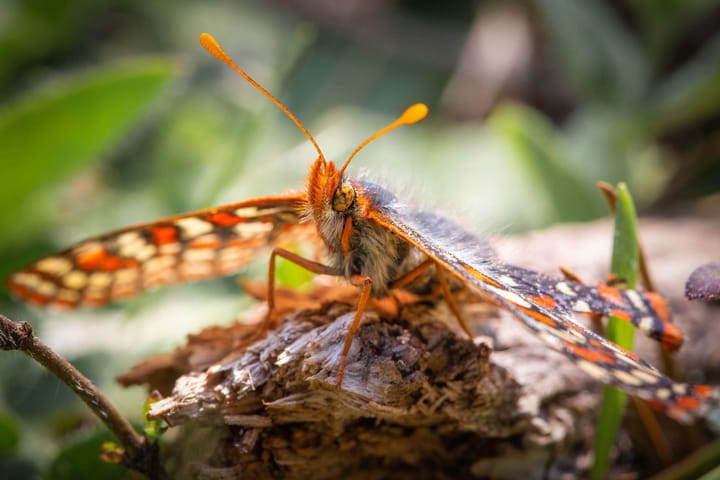
Comments ()